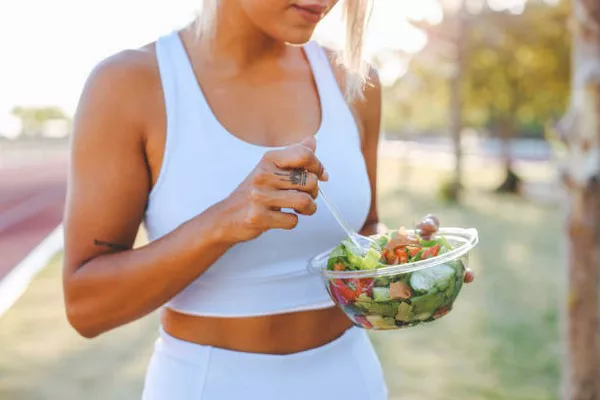When Jessica, a 40-year-old mom of four, reached out to Business Insider’s Nutrition Clinic, she had a clear goal: lose weight and gain muscle. A remote worker with a busy family schedule, Jessica often struggles with finding time to eat properly and exercise consistently. After submitting her daily eating routine for review, Jessica received personalized guidance from dietitian Alix Turoff on how to adjust her habits to better meet her fitness goals.
The Challenges of a Busy Schedule
Jessica’s routine includes managing her four daughters—aged 5 to 12—getting them off to school, and working from home. Despite owning a Peloton bike, Jessica admits that staying motivated to work out is a challenge. “I go on streaks for about four weeks, then fizzle out for a month,” she says.
Her goal is to lose 30 pounds and return to her wedding weight by her next anniversary. However, a major obstacle has been her tendency to snack excessively in the afternoons. According to dietitian Alix Turoff, this pattern is common among busy parents but can be corrected with a few key adjustments.
Tip 1: Start Your Day with a Hearty Breakfast
Jessica’s day begins with coffee and a protein shake, but she often skips lunch due to a lack of hunger. Turoff suggests this eating pattern might be contributing to overeating later in the day. “Between her coffee and protein shake, Jessica likely consumes fewer than 200 calories before lunch, which sets her up for binge eating when hunger strikes later,” Turoff explains.
To fix this, Turoff recommends boosting her breakfast. Jessica can either enhance her protein shake with frozen fruit and nut butter or pair it with a slice of whole-grain toast for added sustenance. A more balanced start will help prevent mid-afternoon cravings.
Tip 2: Focus on Balanced, Substantial Meals
By mid-afternoon, Jessica often finds herself reaching for unhealthy snacks—chips, granola bars, and chocolate—especially when stressed. While she prefers whole foods, the stress of managing a busy household sometimes leads her to indulge in processed snacks.
To combat this, Turoff advises that Jessica’s meals include a balance of protein, carbs, fat, and fiber. Even if she’s not particularly hungry for lunch, she should still aim for a balanced meal, like a salad with beans and lean protein (chicken, tofu, or shrimp), or a turkey sandwich on whole-grain bread. This will help stabilize her blood sugar and reduce cravings for sugary or carb-heavy snacks.
Tip 3: Plan Snacks in Advance
Turoff suggests that Jessica plan her snacks ahead of time to avoid mindlessly reaching for unhealthy options. By selecting three nutritious snacks—such as popcorn with string cheese, nuts and fruit, or a protein bar—Jessica will have healthy choices on hand when cravings strike. Having a pre-established snack routine will make it easier to stay on track throughout the day.
Tip 4: Include Carbs in Your Evening Meals
Dinner time can be challenging for Jessica, especially since she often skips meals after snacking heavily in the afternoon. Turoff recommends making her evening meals more satisfying by incorporating a healthy carbohydrate, such as baked sweet potatoes, rice, or whole grains. This will help her feel fuller and more satisfied at dinner, making it easier to resist unnecessary snacking.
Tip 5: Calories Matter for Weight Loss
While exercise is important, Turoff stresses that a calorie deficit—burning more calories than you consume—is the key to losing fat. Jessica doesn’t need to obsess over counting calories, but understanding portion sizes can be helpful. Turoff suggests that Jessica calculate her target calorie intake by multiplying her goal weight by 12. This will provide a rough estimate of how many calories she should aim to consume daily to achieve her weight loss goals.
Tip 6: Build Up to Consistent Exercise
Although exercise plays a smaller role than diet in fat loss, Turoff emphasizes that physical activity can still support Jessica’s goals. She advises that Jessica first focus on improving her eating habits, as seeing progress on the scale will likely boost her motivation to exercise more regularly. If she’s not enjoying her Peloton workouts, Turoff suggests exploring other types of exercise—whether it’s different classes or activities—to find something that she truly enjoys. Strength training, in particular, should be incorporated two to three times a week to support muscle growth.
By implementing these practical strategies, Jessica can begin to make meaningful progress toward her fitness goals. With a little more planning, a focus on balance, and a shift in her mindset, she can overcome her current challenges and find success in both her weight loss and muscle-building journey.
Related Topics:
What Are the Long-Term Effects of Low-Fat Diet on Fitness Outcomes?


